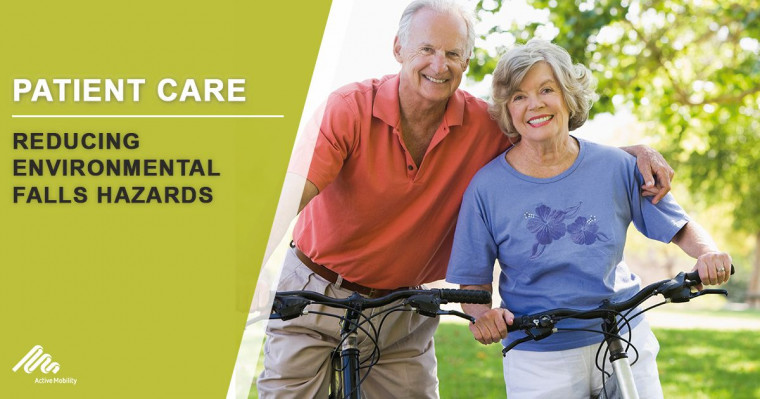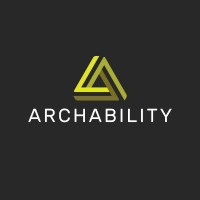-
Australia
Copyright © 2025 Powered by BCI Media Group Pty Ltd
Confirm Submission
Are you sure want to adding all Products to your Library?
Contact Detail

Falls prevention is an important aspect of every day life as falls can happen to anyone, not just elderly patients, and while we covered how to reduce your personal risk of falling today we’ll cover environmental risks as they are just as important as personal ones.
By making your home and surroundings safer it not only reduces the number of falls and accidents, but can make daily activities easier to manage as you get older.
Just as we age so can our houses and surroundings through general ‘wear and tear’ or lack of maintenance, which makes them less safe. Unfortunately we don’t often notice this as we lived there for many years without any issues and that’s why it’s important to check your surroundings and takes steps to make it safer.
Apart from surrounding hazards some of the dangers come from the way we choose to do things. For example climbing onto a kitchen chair to reach an item high above you can be dangerous; therefore it’s best to either keep the item in a place that’s reachable or ask someone to reach up for you.
Clothes or dressing gowns that are too long and loose can increase your risk of falling as they can catch onto things.
Lighting Hazards
Our eyesight change with age and that means it’s important that we make it easier for our eyes to detect hazards sooner. You can do this by increasing the amount of light, particularly in frequently used areas and at night, and turn the light on whenever you’re walking around or leave lights on in passage ways and other areas at night.
Speaking of lights it’s best to have light switches easy to reach. Additionally two way light switches can help in corridors or rooms where there is more than one entry or on stairs. It’s also best to use curtains or blinds on windows to reduce daytime glare.
Obstacles and hazards need to stand out if possible; for example edges of steps can be highlighted with either paint or brightly coloured tape or if you have furniture then have the colour contrast with the colour on the walls and floor for better visibility.
Avoid having heavily patterned floor coverings as they can make small obstacles or edges of steps hard to see because they blend in and if you have anything outside that throws shadows across paths then it’s best to remove it to prevent confusion.
Slipping Hazards
Unsafe footwear and slippery surfaces increase your risk of slipping, which in turn increase your risk of falling. Wearing safe shoes is a start, but it’s also best to use non-slip mats in wet areas such as showers and bathrooms and for larger wet areas it would be best to have the entire area treated to make it non-slip or replace the floor with non-slip materials.
Handrails or a seat in the shower or bath can also help with preventing slips and avoid talcum powder on tiles, vinyl or wooden floors as it makes them slippery.
If dropped food and spills are in the kitchen or eating area then mop it up as soon a possible and do not polish floors as they make them slippery. Having non-skid tape is useful for both highlighting edges and providing extra grips on steps and stairs while removing mats and rugs, or at least ensuring they have either non-slip backing or secured with double sided tape, are also advisable.
Paths outside should be kept clear of moss, slime and fallen leaves and walking surfaces in and around the home should have non-slip surfaces to prevent falls.
Tripping Hazards
As we age we don’t pick up our feet as much as we used to and as a result we’re more inclined to trip over even the smallest of things. To prevent that from happening it’s best to not only keep walkways clear of clutter, but also tuck electric cords under furniture or around skirting boards. It’s also best to tape them down or use a power board which can reduce the number of long cords around a room.
It’s also advisable to remove, or mark, even small changes in floor level with contrasting colour or tape so they’re more visible and ensure that quilts, bed-spreads and curtains don’t fall across the floor.
Torn or stretched carpet should either be removed or repaired as should mats and rugs, or at least have those secured, mats that curl or fold over easily should also be removed. Check for cracks and uneven areas for outdoor paths and choose outside door mats with sloping edges.
Structural Hazards
There are built-in features at home that could be a danger such as a step at the entrance to the shower that you have to step over with that could cause you to slip when it’s wet or even broken steps so its best to keep homes well maintained.
One thing to think about is the safest and most convenient place in your home each time you want to do something. For example if you have a spare room that’s closer to the toilet perhaps you could move your bedroom or to consider commode chairs. Another example would be to have the kettle placed between the waist and shoulder height when having a cup of tea or coffee.
Have the bathroom and toilet doors open outwards so that if you fall someone can catch you and install rails in the bathroom, toilet, near the front and back door and at any steps. Soap holders should be recessed so that you won’t hit them if you slip in the shower/bath. You could also design the shower to be spacious so that you haven’t to step over anything or down to get into it.
Another thing you can do is consult with an occupational therapist about eliminating the ‘hob’ or step into the shower if possible as well as about having equipment that may make things easier and safer such as a bath board or bath seat.
Hopefully some of these tips can give you an idea on what you can do to reduce your risk of falling. Active Mobility Systems stocks a wide range of falls management products such as non-slip socks, alarms and hip protectors. Give our sales team a call on 02 9649 2111 to see how we can help you.



